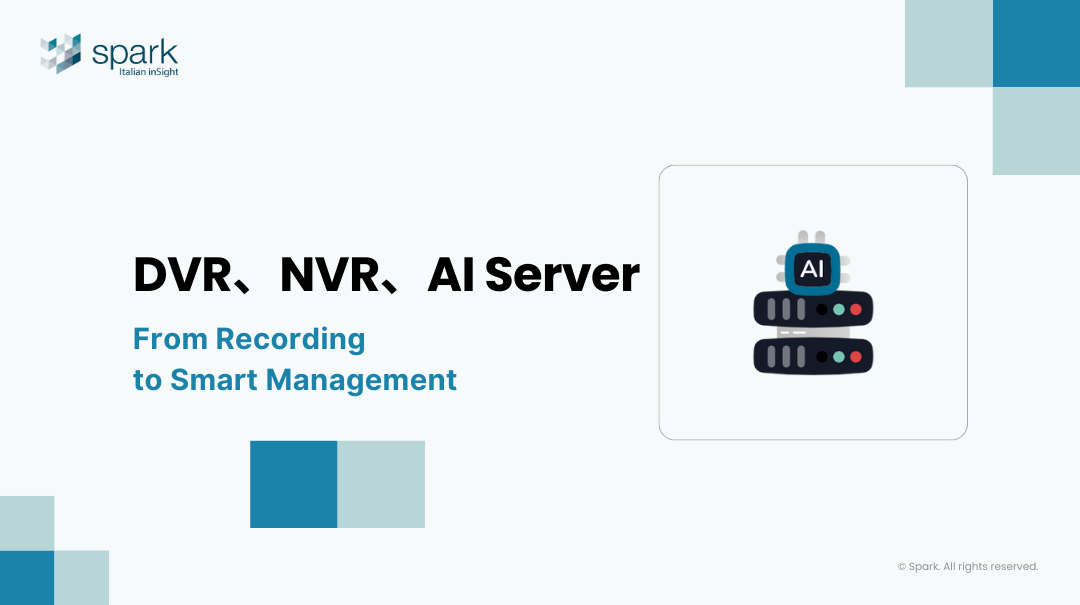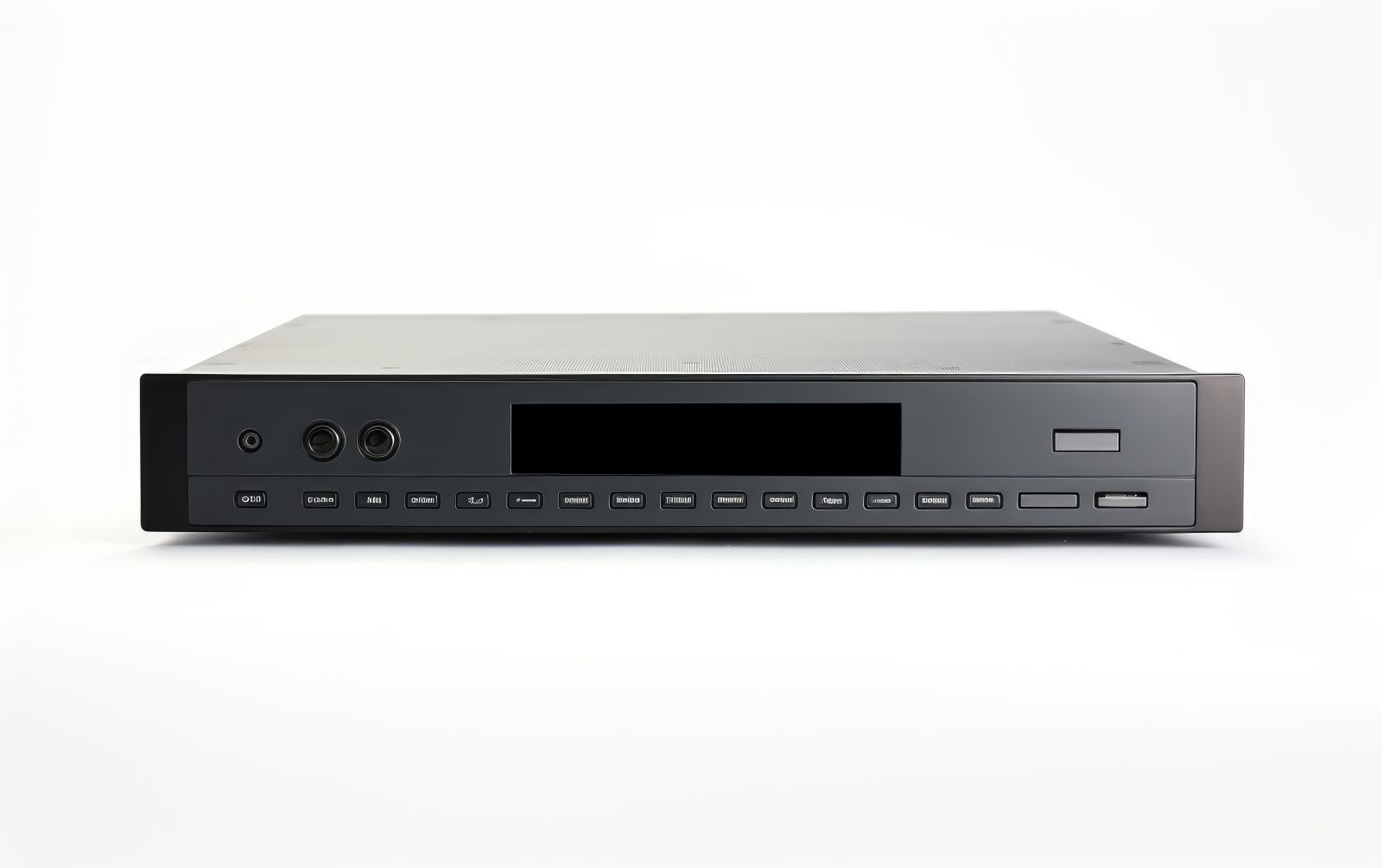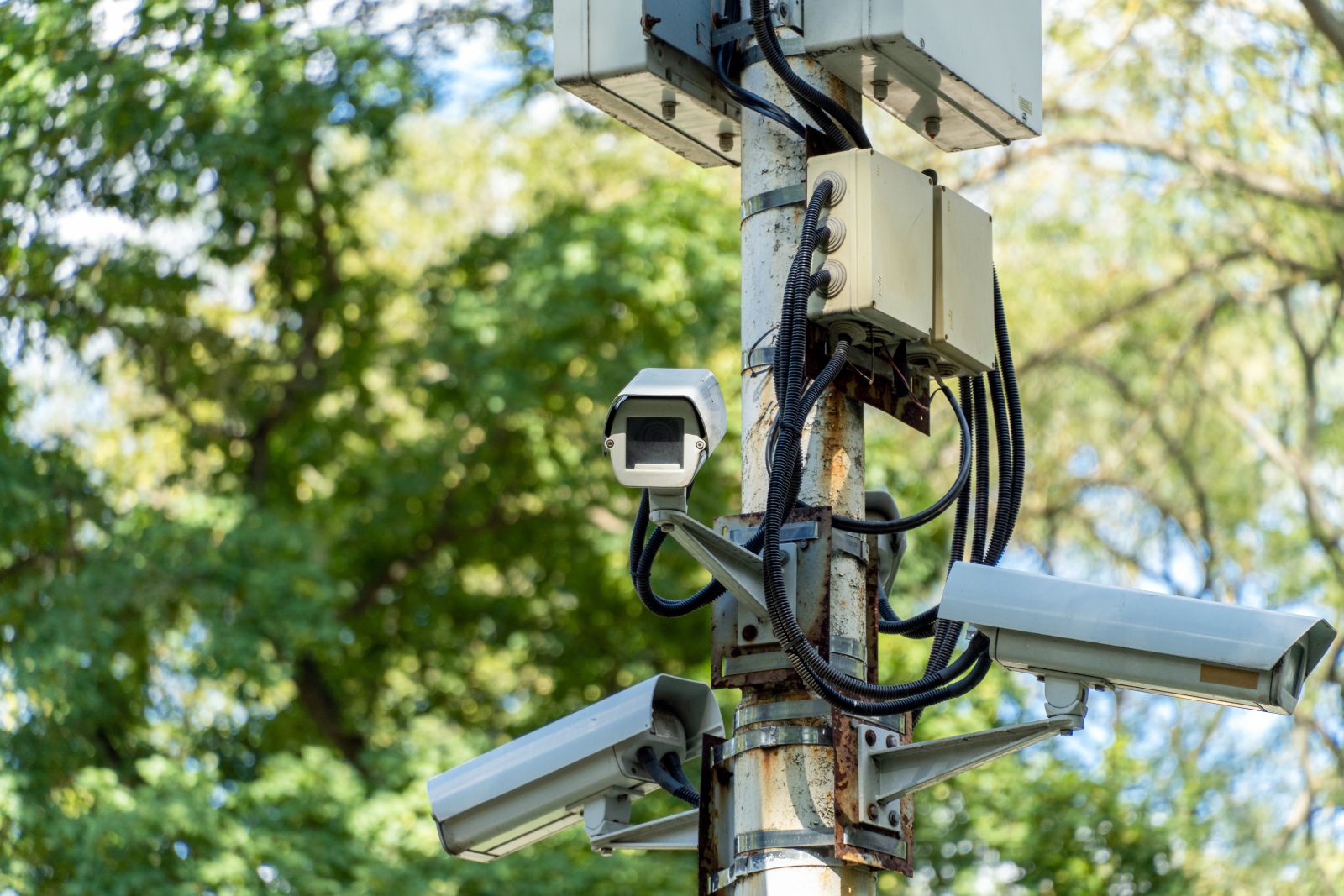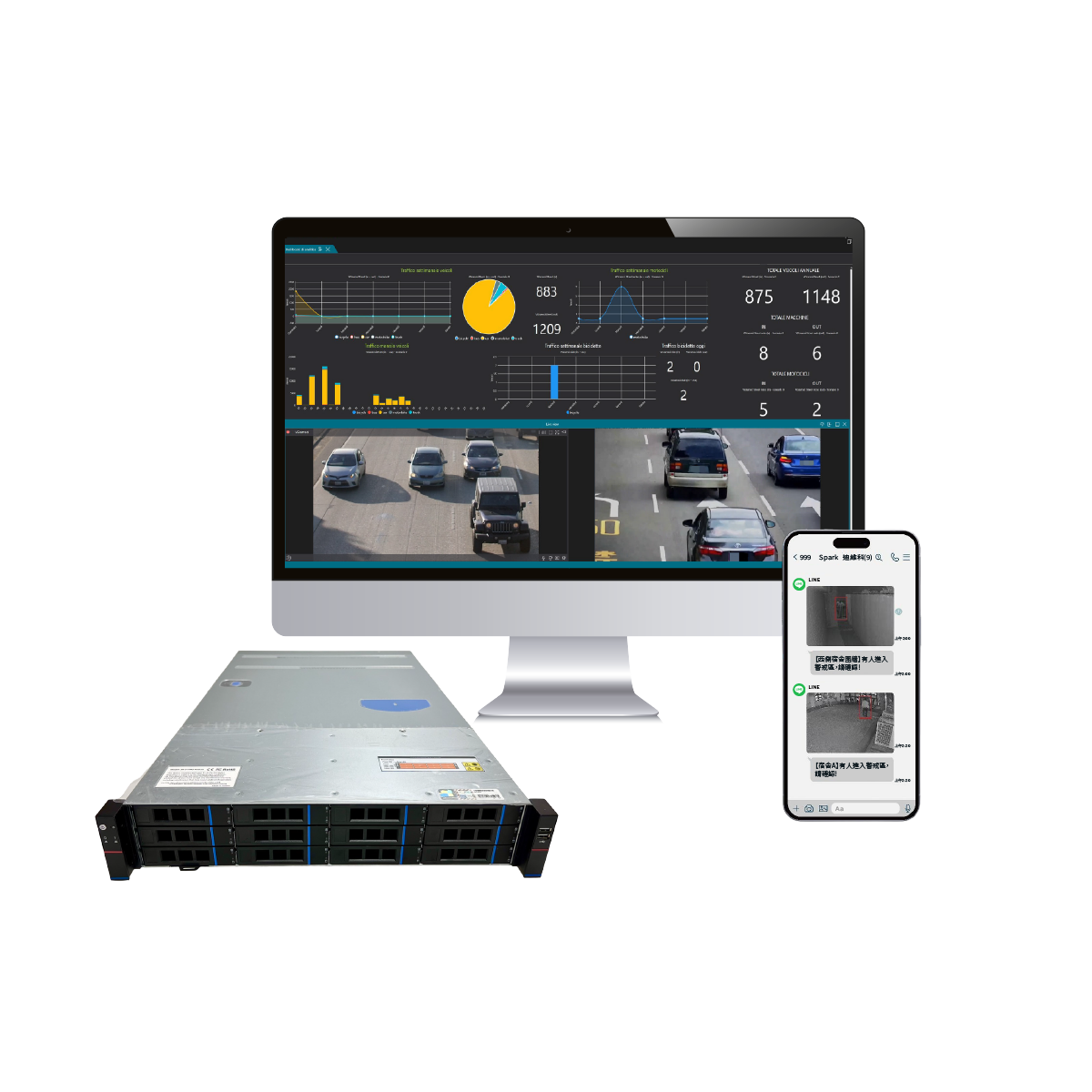2025.08.20
Surveillance technology has come a long way—from traditional analog DVRs to fully digital NVRs, and now to AI-powered servers with centralized management. Each system has its own strengths, limits, and best uses. How you install it, how scalable it is, and how “smart” it can get will all impact how well it works for your site.
For businesses, property managers, and system integrators, understanding the differences between DVR, NVR, and AI Servers can help you save money, improve reliability, and make sure your security system grows as your needs evolve.
This guide breaks down the key features, benefits, and real-world uses of each system—so you can quickly pick the right solution for your space.

What is an NVR? Digital Video Recording System

An NVR (Network Video Recorder) is designed for digital IP cameras. It receives video via standard network protocols like RTSP and ONVIF, so you get high-resolution recording and flexible remote management—no analog conversion needed.
Why You’ll Love It:
-
Works with IP cameras
-
Supports high resolutions (up to 4K)
-
Can cover multiple sites or network segments
-
Scalable and flexible
-
Basic video management built-in (UI, scheduled recording, event triggers)
Best For:
Office buildings, campus/community recording centers, medium to large commercial spaces.
What is a DVR? Traditional Analog Surveillance
 A DVR
A DVR
A DVR (Digital Video Recorder) works with analog cameras (CVBS, HD-TVI, AHD). Video travels through coaxial cables to the DVR, which digitizes and stores it.
Why It Works:
-
Compatible with analog cameras
-
Easy to install
-
Simple cabling
-
Centralized recording at one site
Limitations:
-
Hard to expand
-
No multi-site support
Best For:
Small shops, older buildings, limited camera setups, or budget-conscious transitional projects.
What is an AI Server? Smart Surveilance with Built-in VMS
An AI Server combines VMS software and AI computing in one powerful platform. It integrates multiple brands, AI analytics, event management, access control, and map-based visualization. Perfect for large, multi-site setups.
Why It Stands Out:
-
Hardware + software all-in-one
-
Supports multiple brands and NVRs
-
Flexible deployment: on-premises or cloud
-
Centralized control for large-scale monitoring
-
Advanced AI analytics: facial recognition, license plate reading, fire/smoke detection
-
Works with NVR or records directly to NAS/Server
Best For:
Smart buildings, smart communities, retail chains, corporate HQs, government facilities, transportation hubs.
DVR vs. NVR vs. AI Server Quick Comparison
| Feature | DVR | NVR | AI Server |
|---|---|---|---|
| Camera Support | Analog cameras (CVBS/TVI) | IP network cameras | Multi-brand IP cameras, multi-platform NVR integration |
| Transmission | Coaxial cable | Network (Ethernet, PoE) | Network, supports WAN/multi-site |
|
Storage |
Local HDD | Local or NAS |
Distributed, cloud, or hybrid storage |
| AI Analytics | ✕ | Basic support (brand-dependent) |
Modular integration, diverse AI applications |
| Scalability | Low | Medium, hardware-dependent |
High, modular architecture |
| Suitable Scale | Small environments | Medium-scale surveillance |
Large, multi-site, complex deployments |
| Renote Mangement | Limited | Basic support |
Centralized management with hierarchical permissions |
How to Choose the Right Surveillance System?
Different systems fit different needs. If you want scalability, centralized management, and AI analytics, an AI Server with VMS should be your go-to solution.

Recommended by Scenario:
|
Scenario |
Best System |
|---|---|
|
Small budget, basic security |
DVR |
|
Digital upgrade with remote access |
NVR |
| Multi-site, centralized monitoring, AI analytics needed |
AI Server |
Even if you already have several NVRs, integrating AI VMS Mini or AI VMS Server lets you centralize management, enable AI analytics, and optimize efficiency and response time.
Why Go with an AI Server?
Surveillance is moving from simple recording to intelligent recognition + centralized management.
An AI Server with built-in VMS:
-
Integrates multiple devices and brands
-
Provides real-time event analysis
-
Offers permission-based access
-
Quickly identifies critical security events for faster, smarter decisions
Enterprise Considerations:
-
Scalability: Can it grow with your site?
-
AI Integration: Detect people, vehicles, faces, license plates, fire, and smoke?
-
Centralized Management: Multi-site monitoring and cross-region collaboration?
For upgrades or new installations, AI VMS Mini / AI VMS Server is the foundation for smart, future-ready surveillance.
Want real-world examples and tailored advice? Contact us today to see how your security system can get smarter.
Surveillance technology has come a long way—from traditional analog DVRs to fully digital NVRs, and now to AI-powered servers with centralized management. Each system has its own strengths, limits, and best uses. How you install it, how scalable it is, and how “smart” it can get will all impact how well it works for your site.
For businesses, property managers, and system integrators, understanding the differences between DVR, NVR, and AI Servers can help you save money, improve reliability, and make sure your security system grows as your needs evolve.
This guide breaks down the key features, benefits, and real-world uses of each system—so you can quickly pick the right solution for your space.

What is an NVR? Digital Video Recording System

An NVR (Network Video Recorder) is designed for digital IP cameras. It receives video via standard network protocols like RTSP and ONVIF, so you get high-resolution recording and flexible remote management—no analog conversion needed.
Why You’ll Love It:
-
Works with IP cameras
-
Supports high resolutions (up to 4K)
-
Can cover multiple sites or network segments
-
Scalable and flexible
-
Basic video management built-in (UI, scheduled recording, event triggers)
Best For:
Office buildings, campus/community recording centers, medium to large commercial spaces.
What is a DVR? Traditional Analog Surveillance
 A DVR
A DVR
A DVR (Digital Video Recorder) works with analog cameras (CVBS, HD-TVI, AHD). Video travels through coaxial cables to the DVR, which digitizes and stores it.
Why It Works:
-
Compatible with analog cameras
-
Easy to install
-
Simple cabling
-
Centralized recording at one site
Limitations:
-
Hard to expand
-
No multi-site support
Best For:
Small shops, older buildings, limited camera setups, or budget-conscious transitional projects.
What is an AI Server? Smart Surveilance with Built-in VMS
An AI Server combines VMS software and AI computing in one powerful platform. It integrates multiple brands, AI analytics, event management, access control, and map-based visualization. Perfect for large, multi-site setups.
Why It Stands Out:
-
Hardware + software all-in-one
-
Supports multiple brands and NVRs
-
Flexible deployment: on-premises or cloud
-
Centralized control for large-scale monitoring
-
Advanced AI analytics: facial recognition, license plate reading, fire/smoke detection
-
Works with NVR or records directly to NAS/Server
Best For:
Smart buildings, smart communities, retail chains, corporate HQs, government facilities, transportation hubs.
DVR vs. NVR vs. AI Server Quick Comparison
| Feature | DVR | NVR | AI Server |
|---|---|---|---|
| Camera Support | Analog cameras (CVBS/TVI) | IP network cameras | Multi-brand IP cameras, multi-platform NVR integration |
| Transmission | Coaxial cable | Network (Ethernet, PoE) | Network, supports WAN/multi-site |
|
Storage |
Local HDD | Local or NAS |
Distributed, cloud, or hybrid storage |
| AI Analytics | ✕ | Basic support (brand-dependent) |
Modular integration, diverse AI applications |
| Scalability | Low | Medium, hardware-dependent |
High, modular architecture |
| Suitable Scale | Small environments | Medium-scale surveillance |
Large, multi-site, complex deployments |
| Renote Mangement | Limited | Basic support |
Centralized management with hierarchical permissions |
How to Choose the Right Surveillance System?
Different systems fit different needs. If you want scalability, centralized management, and AI analytics, an AI Server with VMS should be your go-to solution.

|
Scenario |
Best System |
|---|---|
|
Small budget, basic security |
DVR |
|
Digital upgrade with remote access |
NVR |
| Multi-site, centralized monitoring, AI analytics needed |
AI Server |
Even if you already have several NVRs, integrating AI VMS Mini or AI VMS Server lets you centralize management, enable AI analytics, and optimize efficiency and response time.
Why Go with an AI Server?
Surveillance is moving from simple recording to intelligent recognition + centralized management.
An AI Server with built-in VMS:
-
Integrates multiple devices and brands
-
Provides real-time event analysis
-
Offers permission-based access
-
Quickly identifies critical security events for faster, smarter decisions
Enterprise Considerations:
-
Scalability: Can it grow with your site?
-
AI Integration: Detect people, vehicles, faces, license plates, fire, and smoke?
-
Centralized Management: Multi-site monitoring and cross-region collaboration?
For upgrades or new installations, AI VMS Mini / AI VMS Server is the foundation for smart, future-ready surveillance.
Want real-world examples and tailored advice? Contact us today to see how your security system can get smarter.



